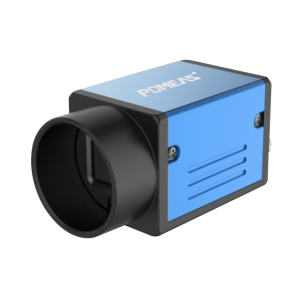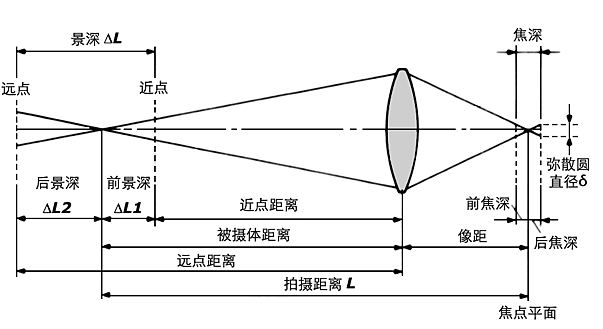
In modern industrial production, the application of automation system has penetrated into every corner. As an important part of the automation system, industrial cameras play an indispensable role.
Industrial camera principle:


An industrial camera is the core component of a machine vision system whose main function is to convert optical images into electronic signals. These signals are then processed and analyzed for a variety of automated tasks. Unlike ordinary cameras, industrial cameras offer higher resolution, faster frame rates, and wider dynamic range to meet the demands of demanding industrial environments.
The concept of depth of field and its importance:

Depth of field is the front and back range where a clear image can be obtained during photography. In the application of industrial cameras, the depth of field directly affects the clarity of the photographed object in the image. A proper depth of field not only ensures a clear image of the target object, but also improves the measurement accuracy and recognition efficiency of the system.

The effect of depth of field on accuracy:
1. Focusing accuracy: When the depth of field is too small, only a very narrow area can be clearly imaged. This can cause some target objects to be blurred, thus affecting the accuracy of automatic identification and measurement.
2. Field of view: The greater the depth of field, the more information can be captured at the same time. This is especially important for applications that require wide-area scanning and inspection.
3. Adaptability to Environmental Changes: Changes in depth of field can affect the camera's ability to adapt under different lighting and environmental conditions. A stable depth of field setting ensures high quality images in a variety of environments.
How to optimize the depth of field of industrial cameras:
1. Choose the right lens: the choice of lens is directly related to the performance of the depth of field. Using a large aperture lens can maintain sufficient depth of field in low-light environments, while a zoom lens can adjust the depth of field range according to specific needs.
2. Adjust the exposure time and gain: Proper exposure time and gain settings can balance the brightness and noise of the image, thus improving the overall imaging quality.
3. Using software algorithms: Depth of field can be optimized at a later stage through advanced image processing algorithms. For example, deep learning techniques can enhance the depth of field effect by analyzing multiple images to synthesize a high-resolution picture.
Product recommendation
TECHNICAL SOLUTION
MORE+You may also be interested in the following information
FREE CONSULTING SERVICE
Let’s help you to find the right solution for your project!

- APPICATION CASE
- RESOURCE CENTER
- DOWNLOAD CENTER
SOLUTIONS SUPPORT
- ZOOM LENS SELECTION TOOL
- TELECENTRIC LENS SELECTION TOOL
- FA LENS SELECTION TOOL
- ZOOM RATIO TABLE
- CERTIFIED MODEL
SELECTION TOOL
- WHY POMEAS
- FAQ
- PRIVACY POLICY
- TERMS OF USE
- DELIVERY & RETURN POLICY
CUSTOMER CARE
 ADDRESS
ADDRESS
Add.:No.68, Chongwei Road, Baizhoubian, East district, Dongguan, China, 523000
CONTACT
 Tel:+ 86-0769-2266 0867
Tel:+ 86-0769-2266 0867
 Fax:+ 86-0769-2266 0867
Fax:+ 86-0769-2266 0867
 E-mail:marketing@pomeas.com
E-mail:marketing@pomeas.com

Wechat QR code

 ASK POMEAS
ASK POMEAS  PRICE INQUIRY
PRICE INQUIRY  REQUEST DEMO/TEST
REQUEST DEMO/TEST  FREE TRIAL UNIT
FREE TRIAL UNIT  ACCURATE SELECTION
ACCURATE SELECTION 